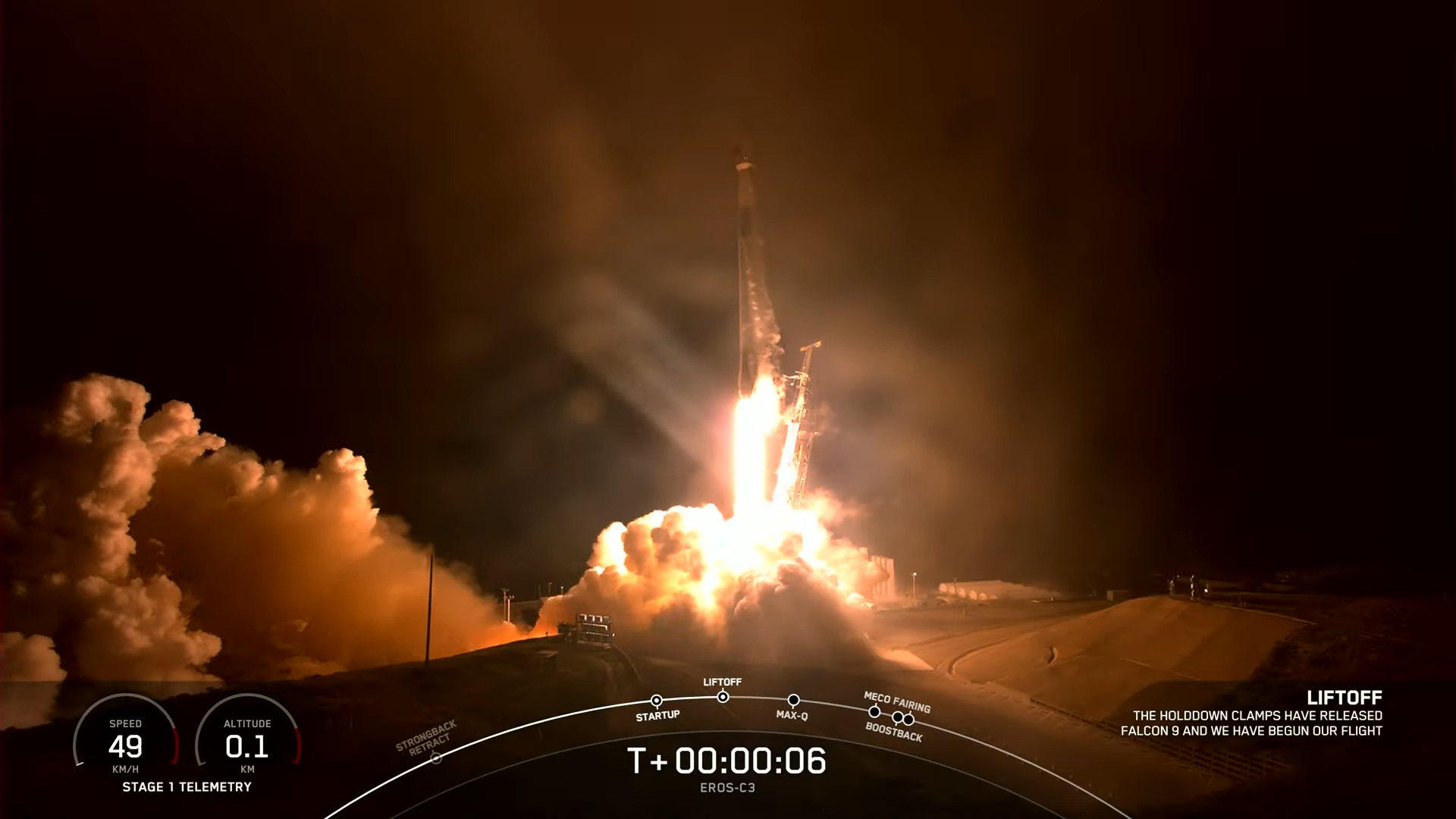
SpaceX has closed out a banner 2022, successfully launching its 61st Falcon-class mission of the year overnight Thursday/Friday. The flight-seasoned B1061 core—which becomes only the sixth Falcon 9 to log an 11th launch—took flight from Space Launch Complex (SLC)-4E at Vandenberg Space Force Base, Calif., at 11:38 p.m. PST Thursday (2:38 a.m. EST Friday), laden with the EROS-C3 electro-optical reconnaissance satellite for Israel’s Ministry of Defense. Last night’s spectacular launch also marked the first time that SpaceX has flown seven times within a single calendar month.
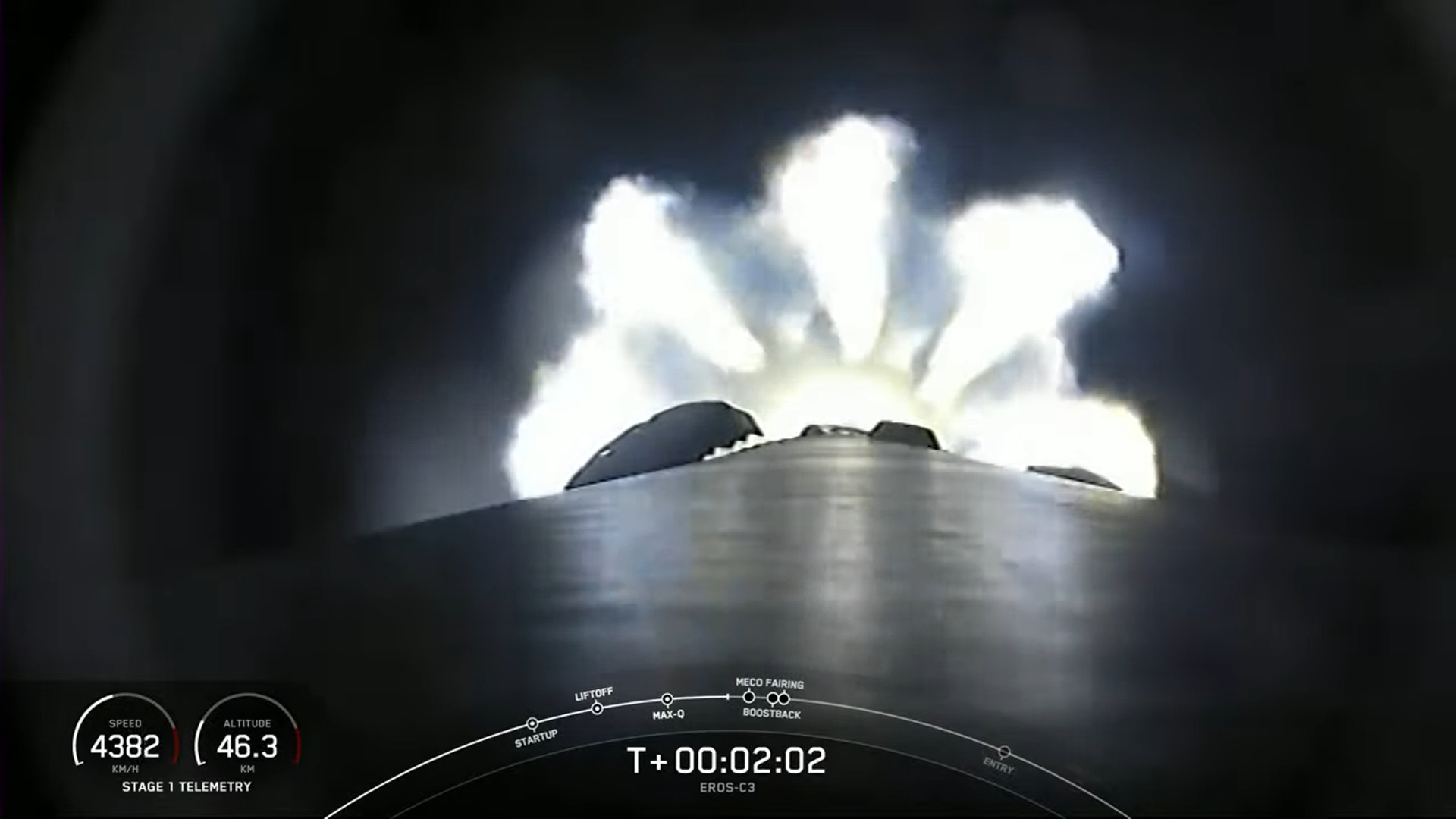
But with weather conditions at Vandenberg hovering around 30-percent-favorable, the original T-0 of 11:17 p.m. PST Thursday (2:17 a.m. EST Friday) was missed. Fortunately, the EROS-C3 mission benefited from a spacious 59-minute “launch window”, allowing SpaceX teams to track towards a revised T-0 target of 11:38 p.m. PST Thursday (2:38 a.m. EST Friday).
Sixty-one missions almost doubles SpaceX’s previous personal-best of 31 launches, achieved at the close of last year. And that raft of flights has been achieved using only 17 Falcon 9 cores, one of which flew no less than eight times.
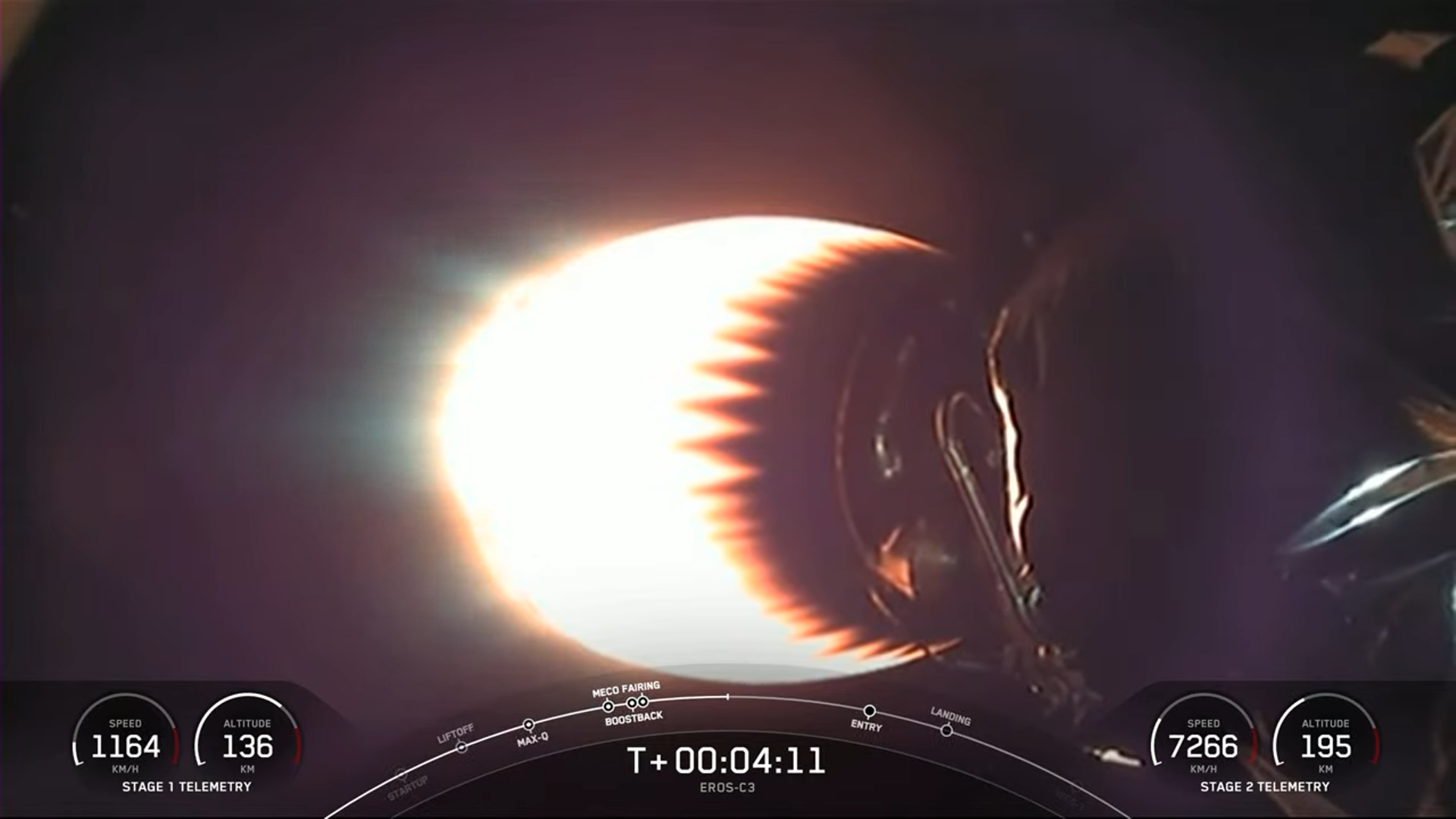
Including last night’s launch, 13 missions have occurred from Vandenberg, more than doubling SpaceX’s previous annual record of six flights, set back in 2018. The West Coast haul of missions featured a pair of highly secretive payloads for the National Reconnaissance Office in February and April and Germany’s SARah-1 radar-imaging surveillance satellite in June.
Added to that list was the NASA-led Surface Water and Ocean Topography (SWOT) mission earlier in December and eight Starlink launches between February and October. That totaled 392 of these small flat-packed internet communications satellites, bound for insertion into orbits of either 97.6 degrees or 53.2 degrees to the equator.
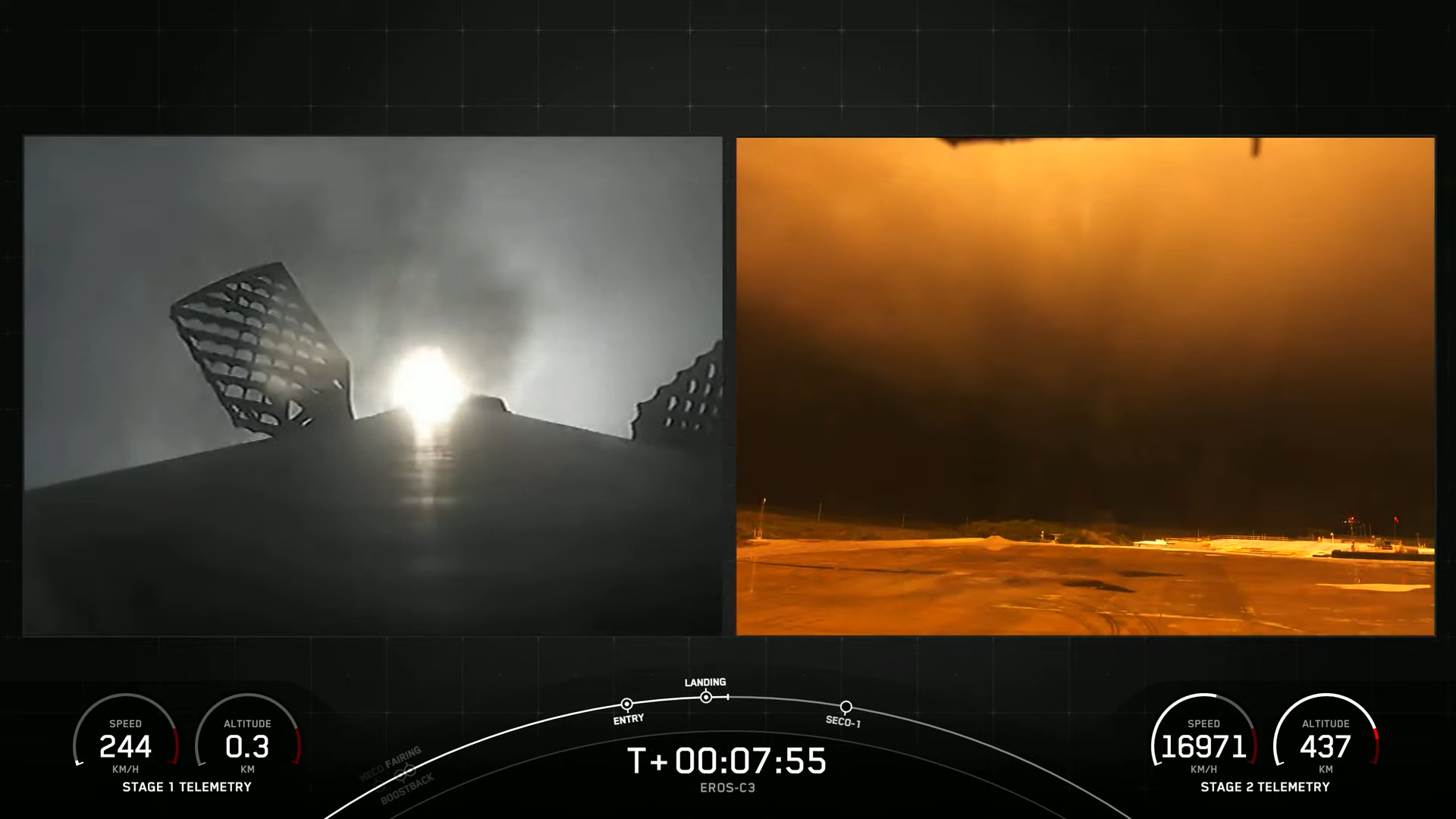
SpaceX’s most prolific year on record out of Vandenberg earned a new mission only in mid-December, when Israel’s EROS-C3—the acronym denotes “Earth Resources Observation Systems”—made an appearance on the manifest. Thought to weigh in the region of 880 pounds (400 kilograms), the satellite is reportedly targeted for a 320-mile-high (510-kilometer) orbit, with an anticipated operational lifespan of a decade.
EROS-C3 carries cameras equipped with Charge Couple Device/Time Delay Integration (CCD/TDI) sensors) and will generate panchromatic imagery of the ground at resolutions as fine as 12 inches (30 centimeters) and multispectral imagery down to 24 inches (60 centimeters), with a nadir-pointing ground swath of 7.1 miles (11.5 kilometers). Few other details are known, with even the mission’s patch revealing little about this late arrival on an already bulging 2022 Falcon 9 manifest.
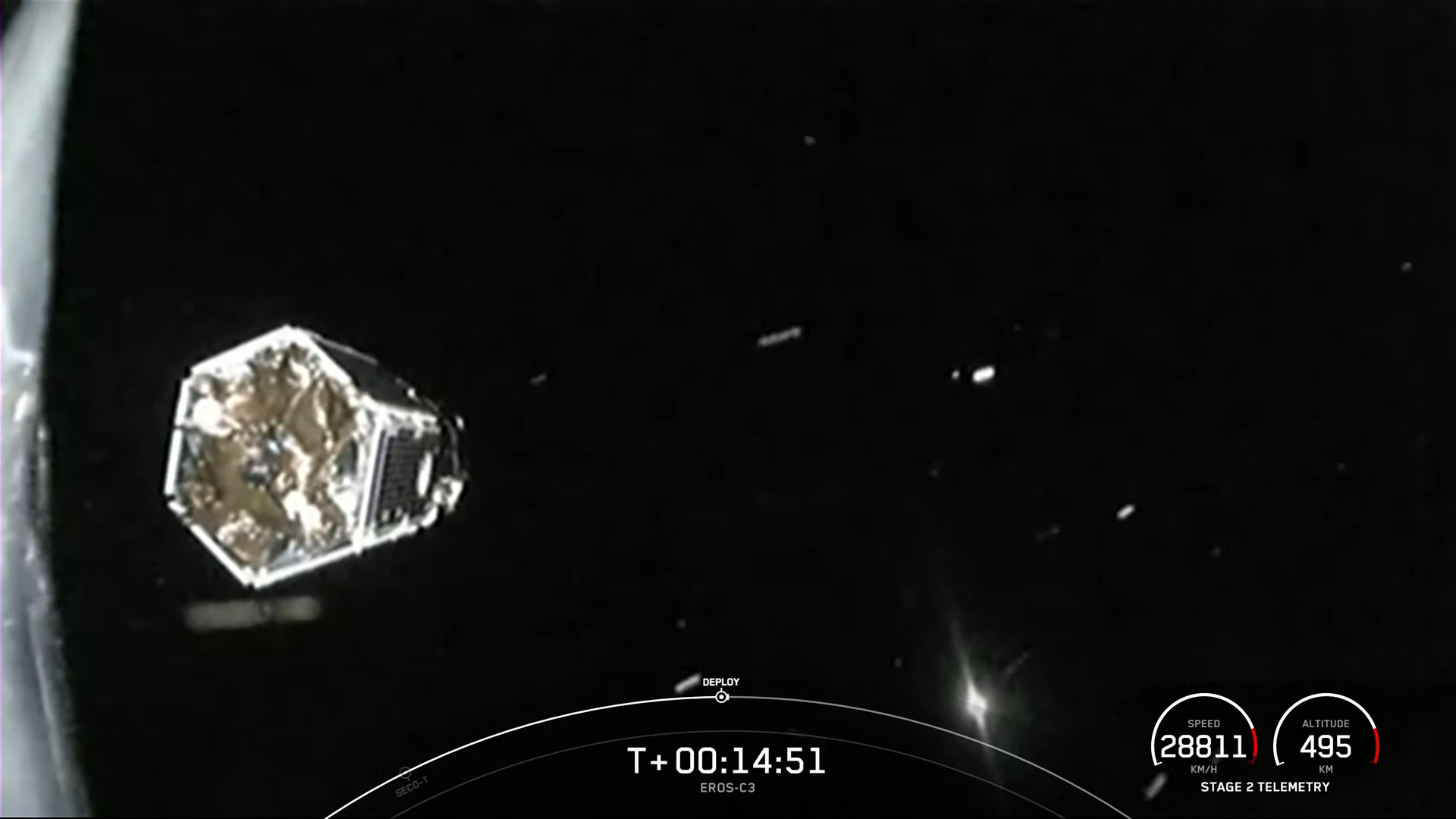
Flying last night’s mission was B1061, which became only the sixth Falcon 9 core to launch an 11th time. She first took flight from the East Coast, back in November 2020, lifting Dragon Resilience and Crew-1 astronauts Mike Hopkins, Victor Glover and Shannon Walker of NASA, plus Japan’s Soichi Noguchi, to the International Space Station (ISS).
In so doing, she marked the first U.S. crewed mission to launch in darkness since the twilight of the shuttle program, a decade earlier. Five months later, in April 2021, B1061 lifted Dragon Endeavour and Crew-2 astronauts Shane Kimbrough and Megan McArthur of NASA, Japan’s Aki Hoshide and France’s Thomas Pesquet to the ISS for a mission which, at 199 days, remains the longest single flight by any U.S. crewed spacecraft.
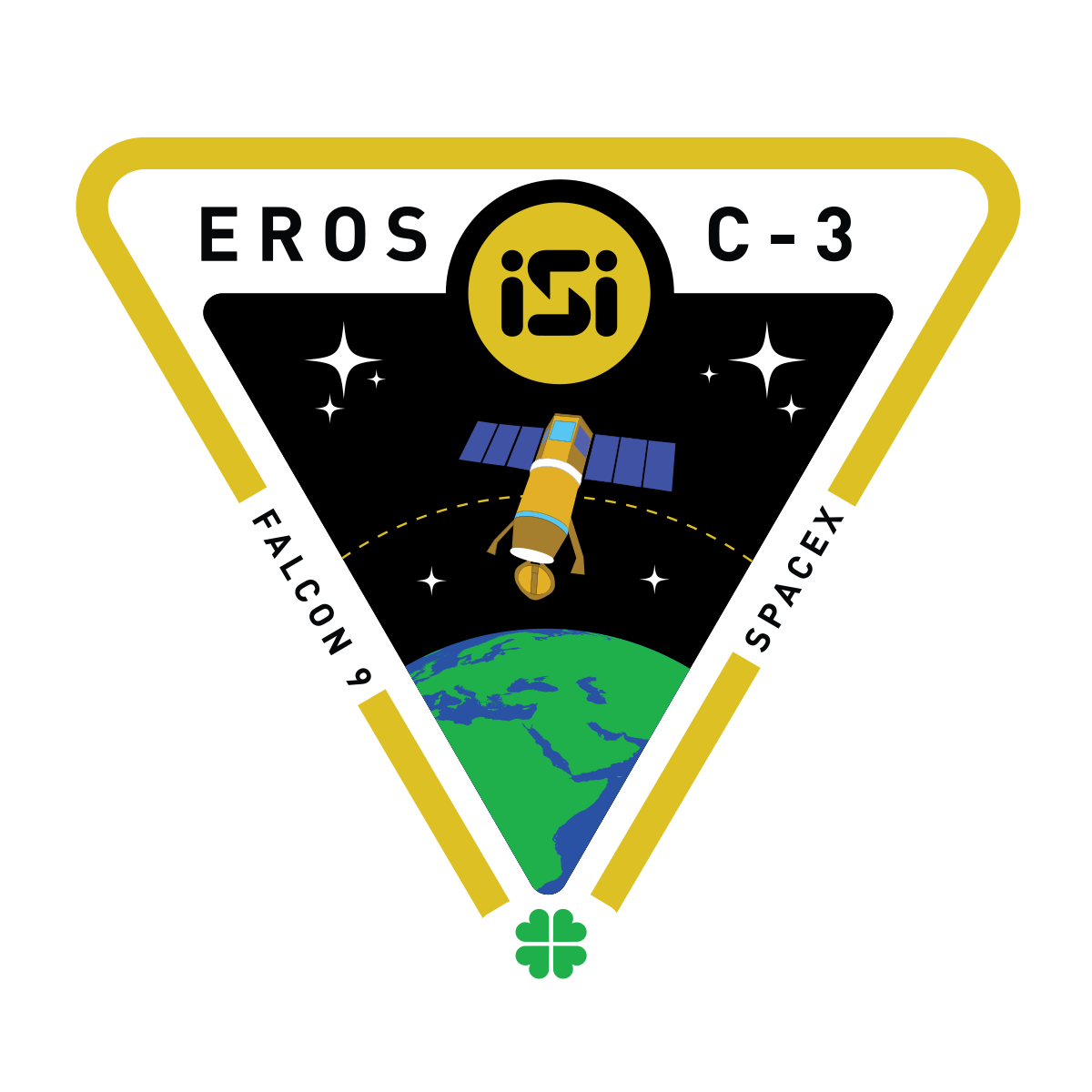
Her human-hauling duties over, B1061 settled last summer into a more regular routine as a payload lifter. She launched SiriusXM’s heavyweight SXM-8 broadcasting satellite last June, SpaceX’s CRS-23 Cargo Dragon to the ISS last August and NASA’s Imaging X-ray Polarimetry Explorer (IXPE) last December.
Since the start of 2022, she has chalked up six more flights: lifting two Starlink batches—95 satellites in total—in February and August, delivering the Transporter-4 and 5 multi-payload “stacks” on April Fool’s Day and late May and a Globalstar-2 global mobile communications satellite and a possible payload for an undisclosed U.S. Government customer in June. Only 25 days elapsed between her Transporter-5 and Globalstar-2 missions, the second-shortest turnaround by a booster in Falcon 9 history.
Following her Globalstar-2 mission, B1061 was moved west to Vandenberg and her most recent pair of missions—Starlink in August and EROS-C3 last night—have been conducted from the West Coast.
It remains unclear whether B1061’s move west will lead her into retirement and a possible “disposable” mission or if the increased flight tempo out of Vandenberg in the final months of 2022 required an additional booster.
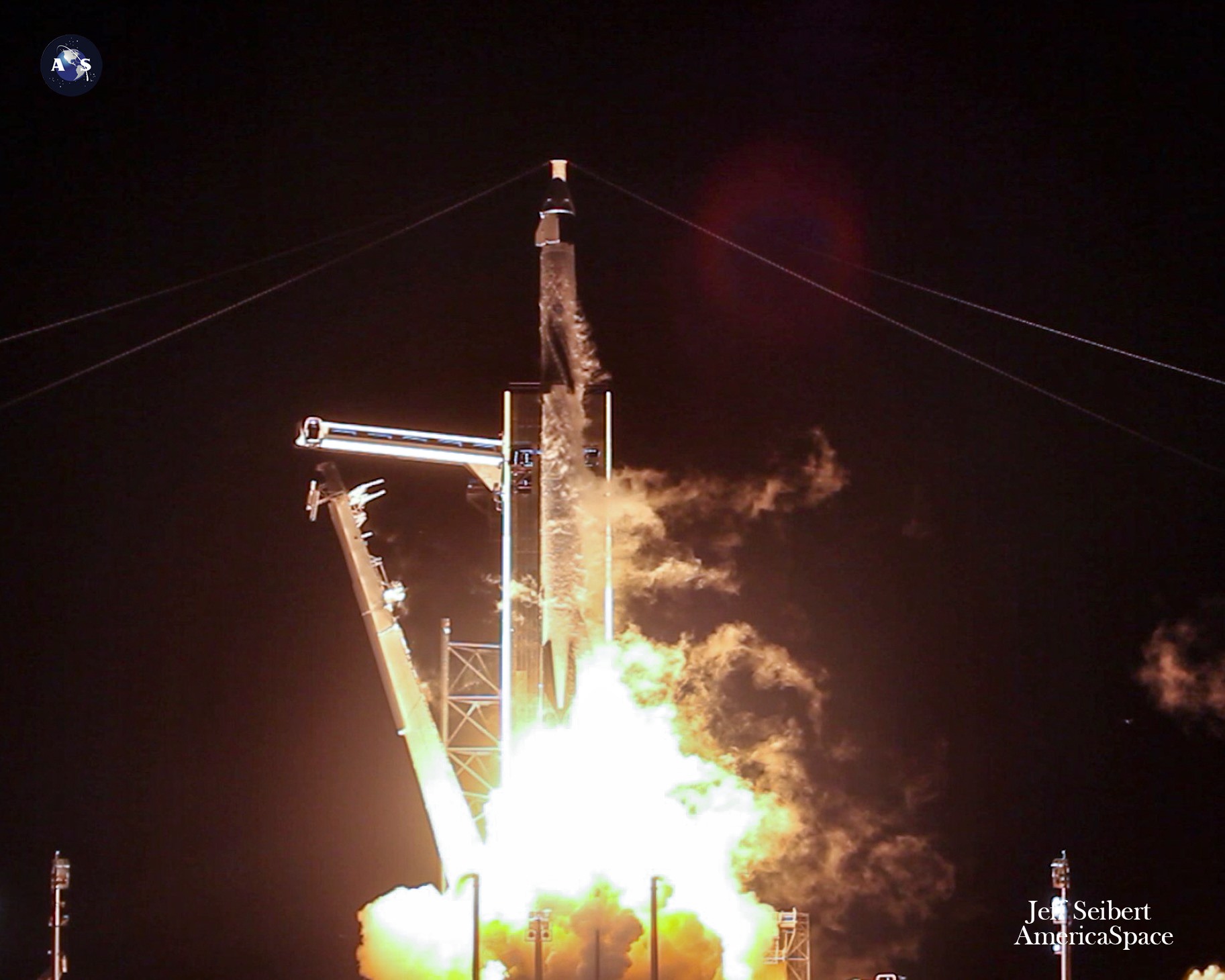
Liftoff occurred on time at 11:17 p.m. PST Thursday (2:17 a.m. EST) Friday, as B1061 powered into the darkness under the thrust of her nine Merlin 1D+ engines for the final mission of the year. The core separated from the rest of the Falcon 9 stack at 2.5 minutes into flight, after which the booster’s second stage picked up the baton with a lengthy “burn” of its Merlin 1D+ Vacuum engine.
This served to position EROS-C3 for deployment about 14 minutes after launch. All told, nearly 2,000 discrete payloads have been ferried uphill by SpaceX in 2022, including 1,722 Starlinks on 34 Falcon 9 missions.
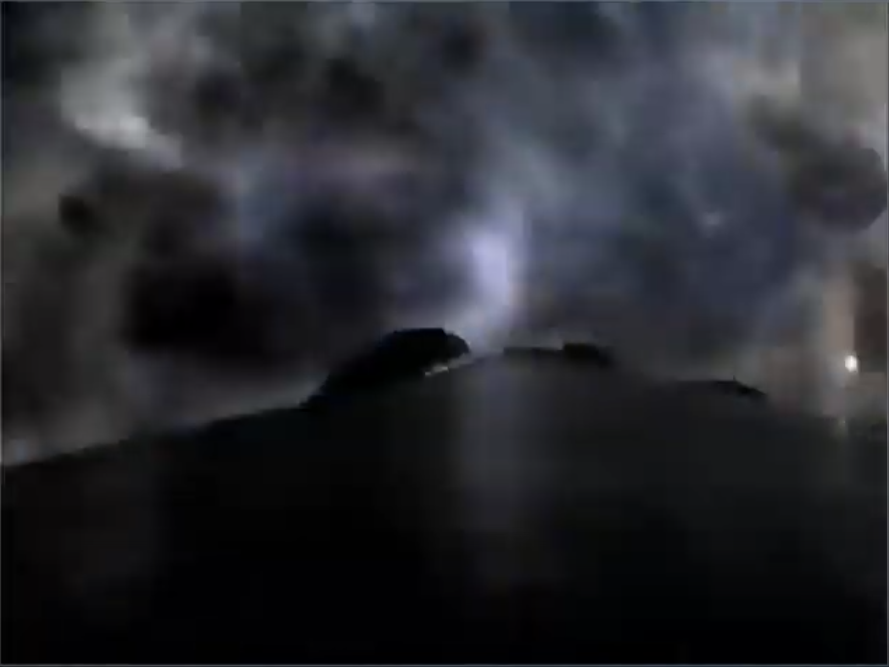
In the meantime, B1061 returned to alight—for the first time in her career—on solid ground at Landing Zone (LZ)-4 at Vandenberg. She had previously landed nine times aboard SpaceX’s Autonomous Spaceport Drone Ship (ASDS) and once at Landing Zone (LZ)-1 at the Cape.
Added to that list, a pair of multi-payload Transporter missions have lifted a further 204 payloads spanning disciplines from technology to education and Earth observations to science. And earlier in December, SpaceX launched 40 broadband internet satellites on behalf of the London, England-headquartered provider, OneWeb.
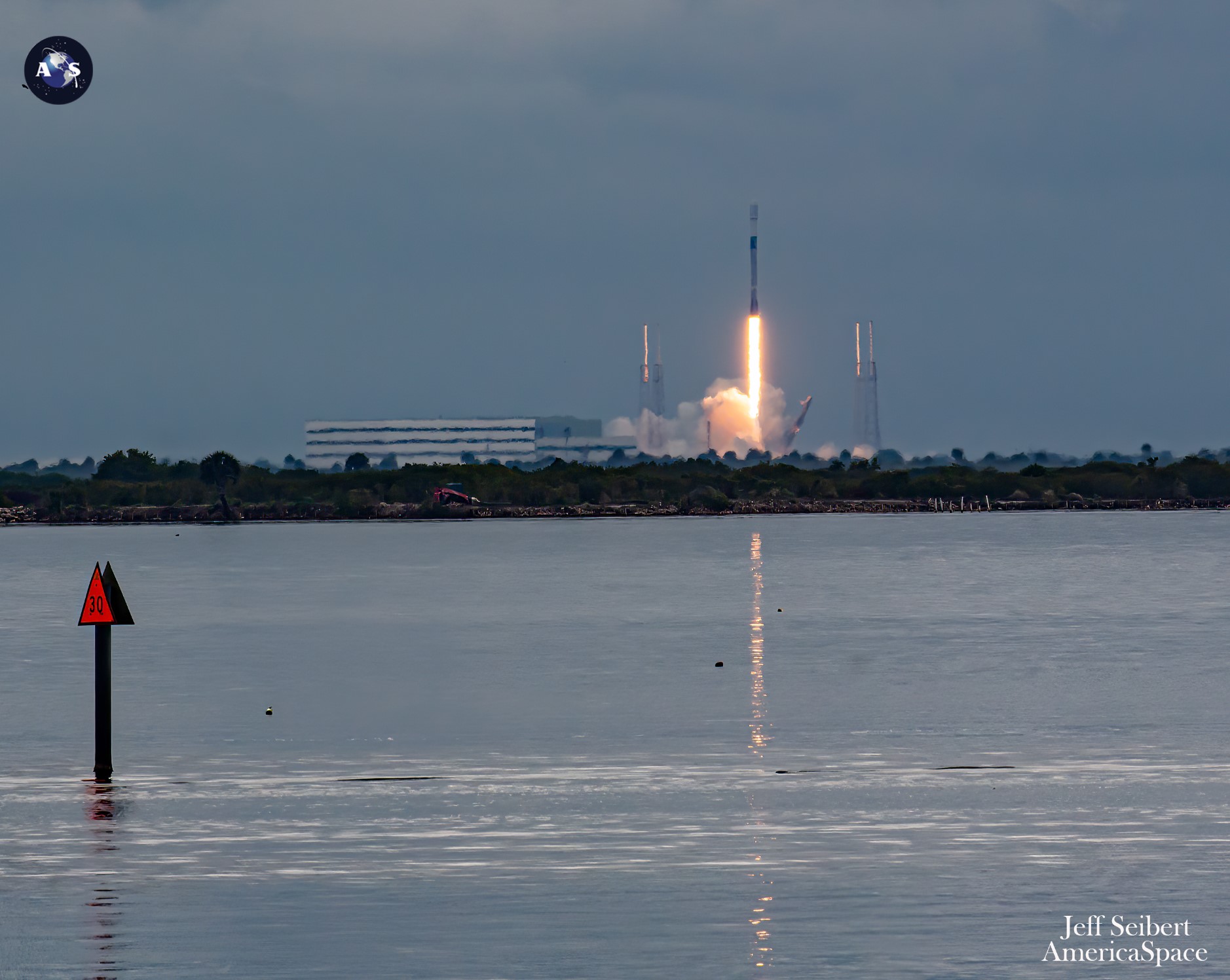
Other missions included South Korea’s first lunar voyage, nine geostationary-bound communications satellites, three crewed visits and a pair of uncrewed cargo missions to the ISS and the return-to-flight after a three-year-plus hiatus of the triple-barreled Falcon Heavy, lofting the highly secretive USSF-44 payload for the U.S. Space Force.
For the first time in 2022, Falcon 9 cores logged record-setting 12th, 13th, 14th and 15th launches. Turnaround times between missions by individual boosters have narrowed from 27 days to just 21 days, intervals between flights have narrowed from 15 hours between a pair of launches last December to only six hours between a pair of launches in early October.
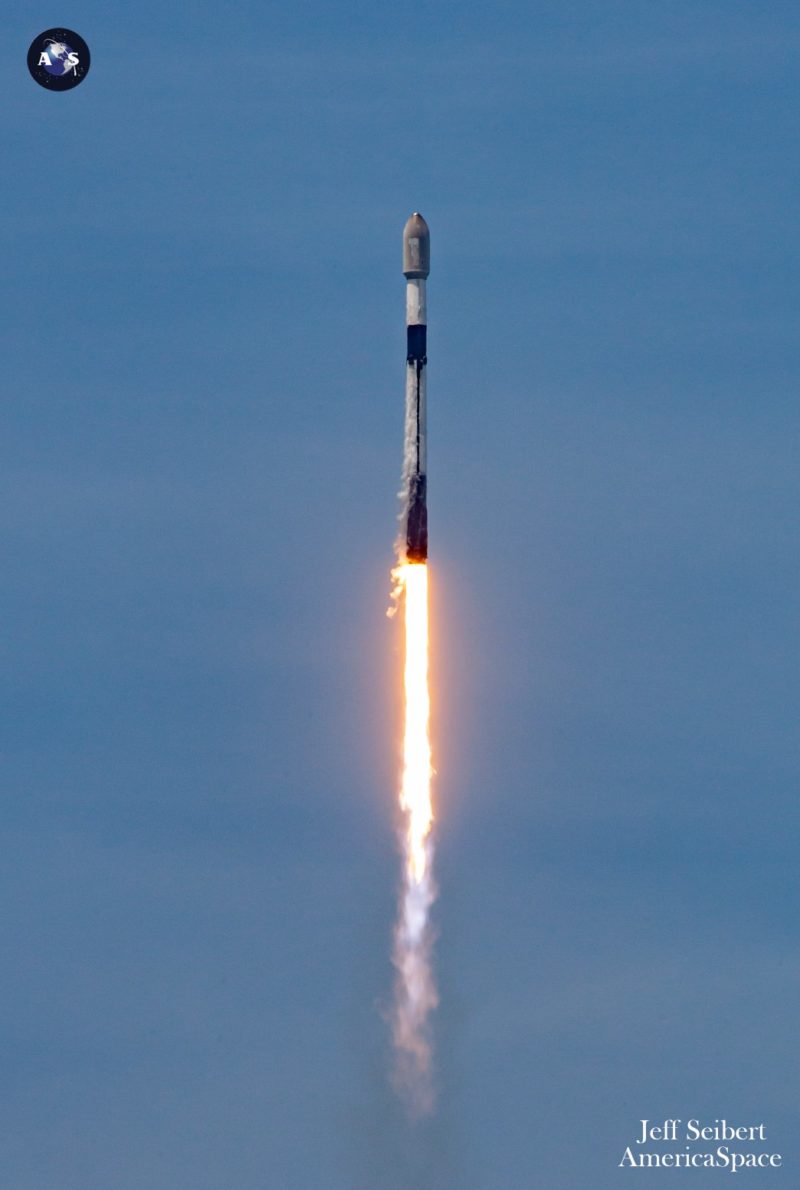
And in April, SpaceX flew its first six-launch month, an accomplishment it went on to repeat in July, August and October. With last night’s flight, for the first time, it has now flown seven times in a single calendar month.
Up next, perhaps as soon as Monday, 2 January, attention returns to the East Coast and 2023’s opening mission, expected to launch from storied Space Launch Complex (SLC)-40 at Cape Canaveral Space Force Station, Fla. Carrying a multitude of “rideshare” payloads in the fields of reconnaissance, communications, air-traffic management, technology, amateur radio and navigation—the exact number of small satellites remains to be revealed—the mission will mark the first of what Elon Musk anticipates could be up to a hundred launches in 2023.




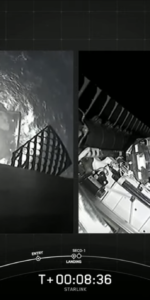

17 Comments
17 Pings & Trackbacks
Pingback:SpaceX’s First 2023 Mission Includes 114-Strong Payload Haul - AmericaSpace
Pingback:SpaceX’s First 2023 Mission Includes 114-Strong Payload Haul - Space News
Pingback:SpaceX Launches First 2023 Vandenberg Mission - AmericaSpace
Pingback:SpaceX Launches 35th Vandenberg Mission, Delivers Starlinks, Looks to Busy Month-End - AmericaSpace
Pingback:Good Florida Weather Expected as SpaceX Heads into Month-End Launch Week - AmericaSpace
Pingback:Good Florida Weather Expected as SpaceX Heads into Month-End Launch Week - Space News
Pingback:SpaceX Misses Monday Triple-Header, As Falcon 9 Launch Schedule Realigns - Space News
Pingback:SpaceX Misses Monday Triple-Header, As Falcon 9 Launch Schedule Realigns - AmericaSpace
Pingback:Crew-6 “Go” for Thursday Pre-Dawn Launch, Vandenberg Mission Just 13 Hours Later - Space News
Pingback:Crew-6 “Go” for Thursday Pre-Dawn Launch, Vandenberg Mission Just 13 Hours Later - AmericaSpace
Pingback:SpaceX Launches From Vandenberg, Pushes Starlink Count North of 4,000 - AmericaSpace
Pingback:SpaceX Launches From Vandenberg, Pushes Starlink Count North of 4,000 - Space News
Pingback:SpaceX Launches Seventh Falcon 9 of March, Looks Ahead to 80-Mission Year - AmericaSpace
Pingback:SpaceX Prepares for Record-Breaking Falcon 9 Launch Today - AmericaSpace
Pingback:SpaceX Flies Eighth Mission of March, Looks to Ninth Launch Tomorrow - AmericaSpace
Pingback:SpaceX Launches 22 Starlinks, Kicks Off Busy June Manifest - AmericaSpace
Pingback:SpaceX Launches CRS-28 Cargo Ship to Space Station - AmericaSpace